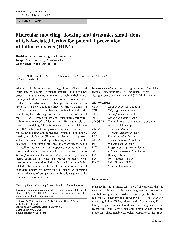摘要
The Galanthus nivalis agglutinin (GNA)-related lectin family exhibit significant anti-HIV and anti-HSV properties that are closely related to their carbohydrate-binding activities. However, there is still no conclusive evidence that GNA-related lectins possess anti-influenza properties. The hemagglutinin (HA) of influenza virus is a surface protein that is involved in binding host cell sialic acid during the early stages of infection. Herein, we studied the 3D-QSARs (three-dimensional quantitative structure-activity relationships) of lectin- and HA-sialic acid by molecular modeling. The affinities and stabilities of lectin- and HA-sialic acid complexes were also assessed by molecular docking and molecular dynamics simulations. Finally, anti-influenza GNA-related lectins that possess stable conformations and higher binding affinities for sialic acid than HAs of human influenza virus were screened, and a possible mechanism was proposed. Accordingly, our results indicate that some GNA-related lectins, such as Yucca filamentosa lectin and Polygonatum cyrtonema lectin, could act as drugs that prevent influenza virus infection via competitive binding. In conclusion, the GNA-related lectin family may be helpful in the design of novel candidate agents for preventing influenza A infection through the use of competitive combination against sialic acid specific viral infection.
- 出版日期2012-1
- 单位四川大学
